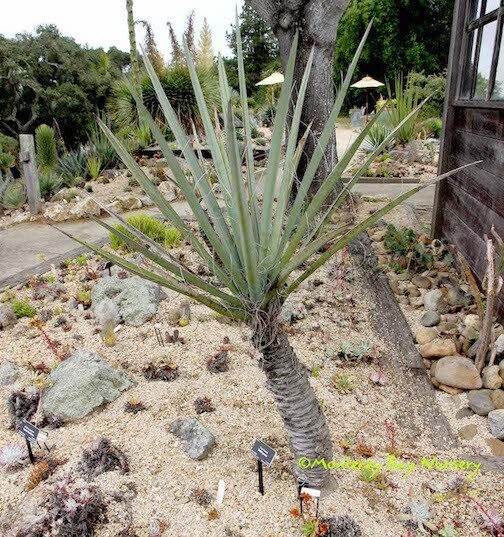WEB STORE IS FOR LOCAL PICKUPS & DELIVERY ONLY; NO MAIL ORDER
We Deliver to: 95816, 95817, 95818, 95819, & 95820. $25 Delivery fee to the above zip codes.
Need delivery to another Sacramento zip code? Please call us.
PHONE ORDERS: Call 916-917-5787
MBN 5Gal Yucca baccata
A clustering or solitary species, one of our four California native species, along with Y. brevifolia (Joshua Tree), Y. schidigera (Mohave Yucca) and Y. whipplei (Chaparral Yucca). This is found mostly in the Eastern Mojave and higher elevations of the Colorado Desert in California, mainly clustered around Clark Mountain. It ranges far beyond, from Utah and Texas south into Mexico's deserts to about the latitude of mid-Baja.
It is variable, with grassy, highly clustering forms and more solitary, trunking populations. It has a distinctive blue grey leaf color and conspicuous leaf-edge fibers. In cultivation it seems to readily form a decent short trunk, slowly, but I've never seen any tree-like specimens in the California wild populations (yet). Some plants seem to grow reasonably well in cooler, moister climates but the more sun and drier the better. Nevertheless the most impressive cultivated specimen I've seen, outside the near-desert habitat at Rancho Santa Ana Botanic Gardens, was at Ernie and Marietta O'Byrne's backyard garden in the foothills at the south end of the Williamette Valley (!!). Just shows to go ya' - never be afraid to try. The worst that happens is the plant dies, then you've learned something. This species produces a large, fat, fleshy fruit, something like a fat banana, that encloses the seeds and is important for wildlife. It was also used historically and to some degree currently by human desert dwellers. It is reportedly quite good when cooked, like sweet potatoes. I'd like to try it so please send me some fruits if you find them. Sun, good drainage etc. etc. Probably hardy to USDA zone 7 in most cases, some populations are native to zone 5 climates.

